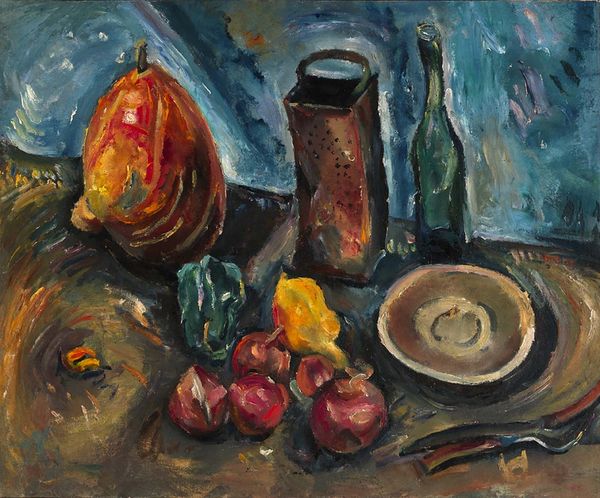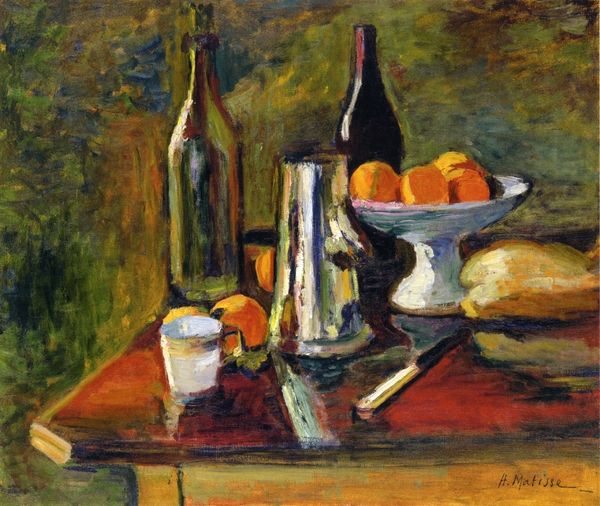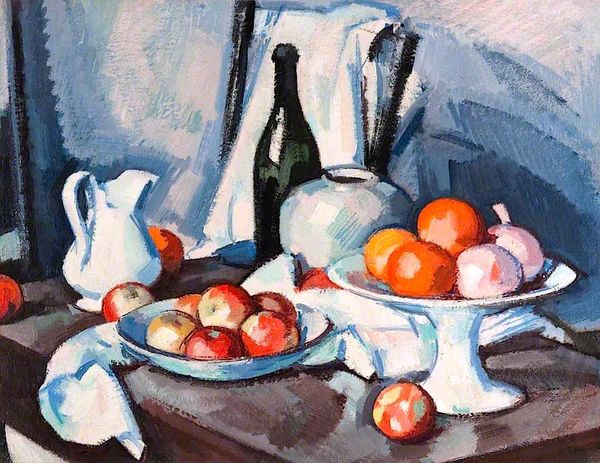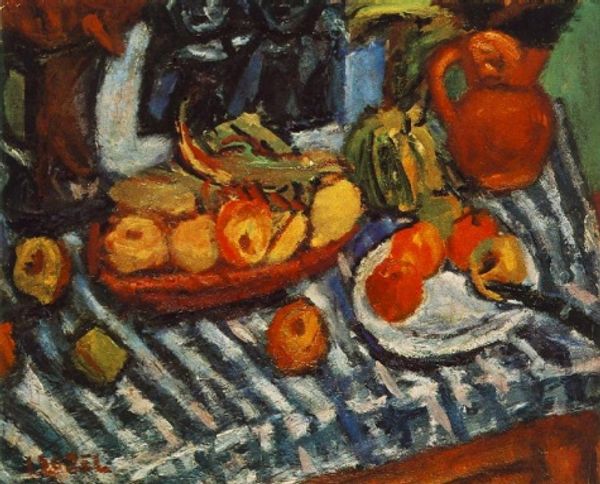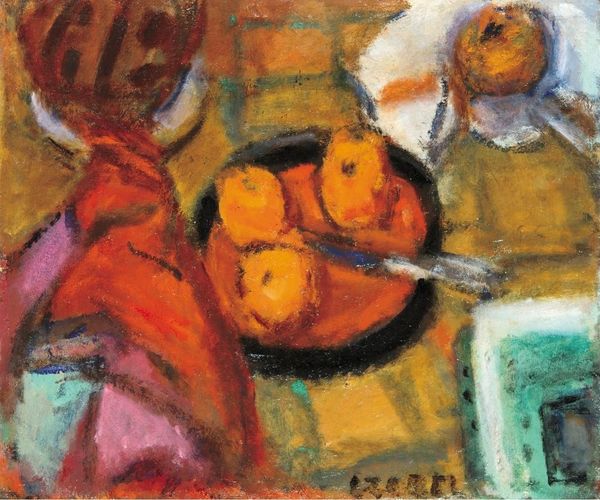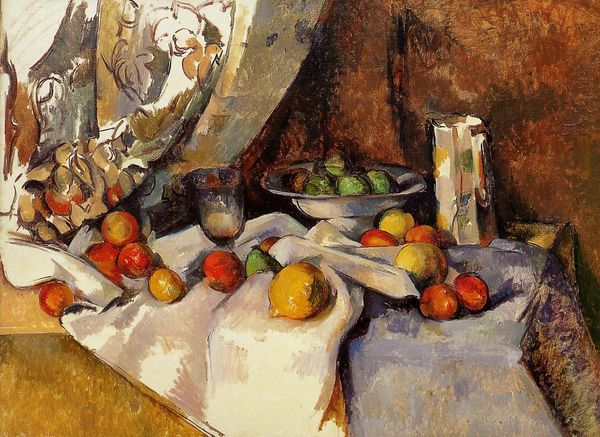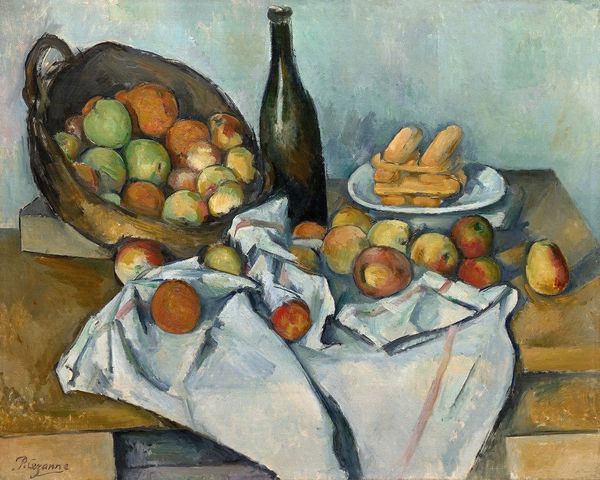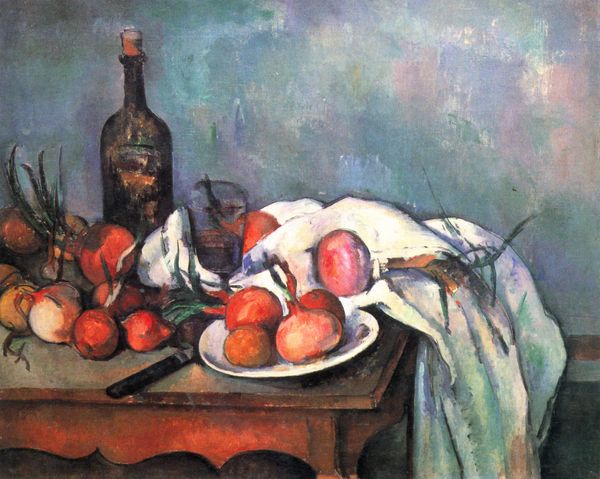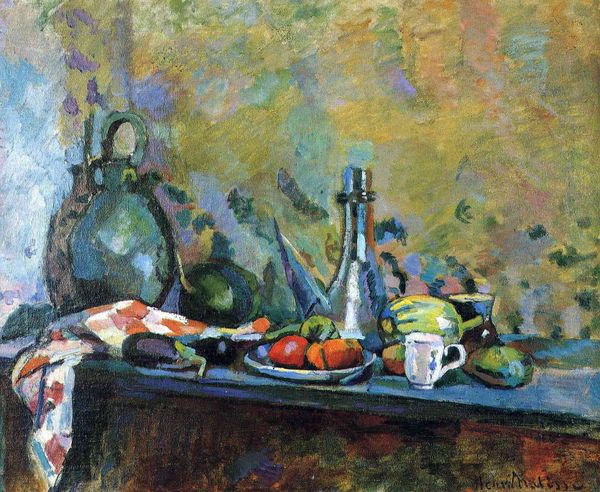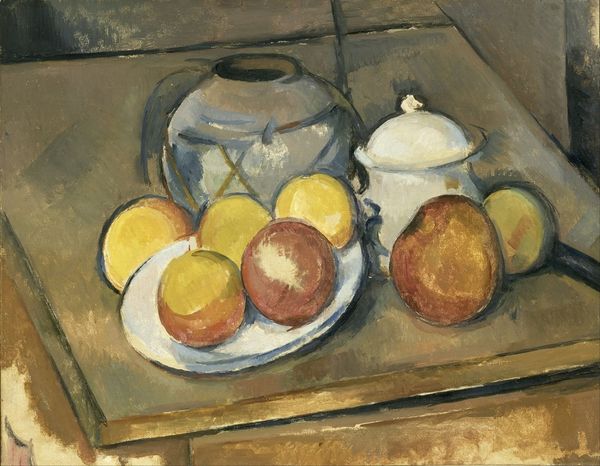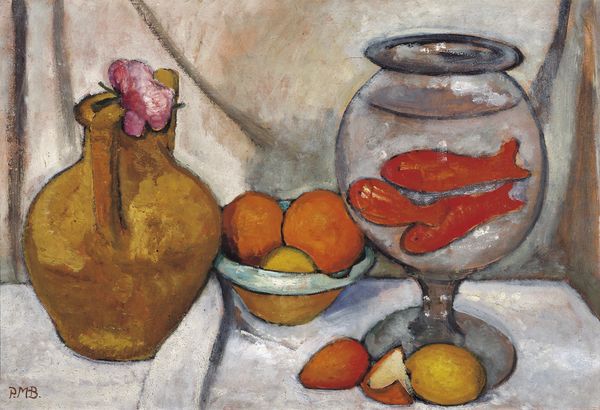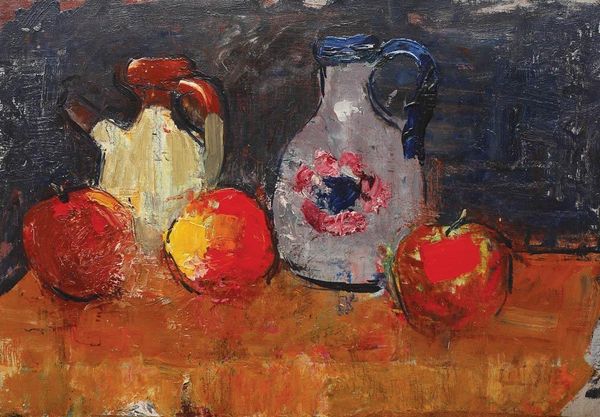
painting, plein-air, watercolor
#
painting
#
plein-air
#
oil painting
#
watercolor
#
post-impressionism
Copyright: Public domain
Curator: Let's take a closer look at Paul Cézanne's "Still Life with Apples, Bottle and Chairback," created around 1902. What’s your initial reaction? Editor: It feels intimate, almost domestic, but simultaneously unsettling. The watercolor seems thin, tentative, with objects barely tethered to reality, more like fleeting impressions. The aggressive reds framing this abundance contrast against this idea, bringing together the idea of fragility, excess and violence. Curator: That instability, I think, is intentional. Cézanne wasn't just depicting objects; he was exploring how we perceive them. The chair back, for instance, is more suggested than defined. Look at how the apples are rendered, each seemingly observed from a slightly different angle, their platonic forms disrupted. Editor: Disrupted yes. In its own way, this quiet still life reflects a burgeoning societal shift. The rise of the bourgeoisie and mass consumerism painted against the backdrop of growing inequalities. The "unfinished" elements of the background feel to me like the painting isn’t interested in reflecting bourgeois value of order and completion. Curator: And isn’t that an insight into Cezanne’s commitment to what lies behind appearance? We look, really look. Cezanne presents a world as seen from a vantage point where seeing itself, and not what is being viewed, is prioritized. These commonplace objects transcend themselves; they're carriers of sensation, challenging our understanding of reality itself. The watercolor medium certainly adds a temporal dimension, something spontaneous, the trace of human observation. Editor: It’s a glimpse into the artist’s mind. There's a constant push and pull between representation and abstraction, questioning what art can and should be doing in this changing social world. The redness dominates but perhaps even warns against the indulgence, that is often unseen and ignored. Curator: Yes! So the symbols aren't fixed, it’s like an openness inviting diverse viewpoints that are held and balanced. Each viewer participates to realize the work of art in the act of viewing. Editor: Precisely! The visual record suggests a reality that shifts under our gaze, never settled or fully knowable. An invitation to participate, disrupt and reimagine new perspectives beyond the canvas.
Comments
No comments
Be the first to comment and join the conversation on the ultimate creative platform.
